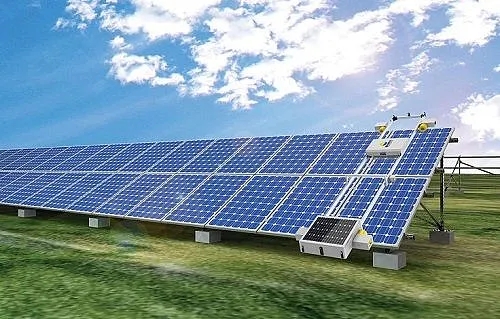The French National Railway Company (SNCF) recently proposed an ambitious plan: to solve 15-20% of electricity demand through photovoltaic panel power generation by 2030, and to become one of the largest solar energy producers in France.
SNCF, the second-largest land owner after the French government, announced on July 6 that it will install 1,000 hectares of canopy on the land it owns, as well as on building roofs and parking lots, according to Agence France-Presse. Photovoltaic panels, the total investment of the plan is expected to reach 1 billion euros.
Currently, SNCF leases its own land to solar producers in several locations in southern France. But chairman Jean-Pierre Farandou said on the 6th that he was not optimistic about the existing model, thinking that it was “renting our space to others cheaply, and letting them invest and make a profit.”
Farandu said, “We are shifting gears.” “We no longer rent out the land, but produce electricity ourselves… This is also a kind of innovation for SNCF. We must dare to look further.”
Francourt also stressed that the project would help SNCF control fares and protect it from fluctuations in the electricity market. The surge in energy prices since the beginning of last year has prompted SNCF to accelerate plans, and the company’s passenger sector alone consumes 1-2% of France’s electricity.
SNCF’s solar power scheme will cover all regions of France, with projects starting this year at around 30 sites of varying sizes, but the Grand Est region will be “a major supplier of plots”.
SNCF, France’s largest consumer of industrial electricity, has 15,000 trains and 3,000 stations and hopes to install 1,000 megawatts of peak photovoltaic panels within the next seven years. To this end, a new subsidiary SNCF Renouvelable operates and will compete with industry leaders such as Engie or Neoen.
SNCF also plans to supply electricity directly to electrical equipment in many stations and industrial buildings and to power some of its trains, more than 80 percent of which currently run on electricity. During peak periods, electricity can be used for trains; during off-peak periods, SNCF can sell it, and the resulting financial proceeds will be used to fund maintenance and renewal of rail infrastructure.
France’s energy transition minister, Agnès Pannier-Runacher, backed the solar project because it “reduces bills while strengthening infrastructure”.
SNCF has already started installing photovoltaic panels in the parking lots of about a hundred small railway stations, as well as several large railway stations. The panels will be installed by partners, with SNCF committing to “purchase, wherever possible, the components needed to build its PV projects in Europe”.
Looking ahead to 2050, as many as 10,000 hectares could be covered by solar panels, and SNCF expects it to be self-sufficient and even resell much of the energy it produces.
Post time: Jul-07-2023









